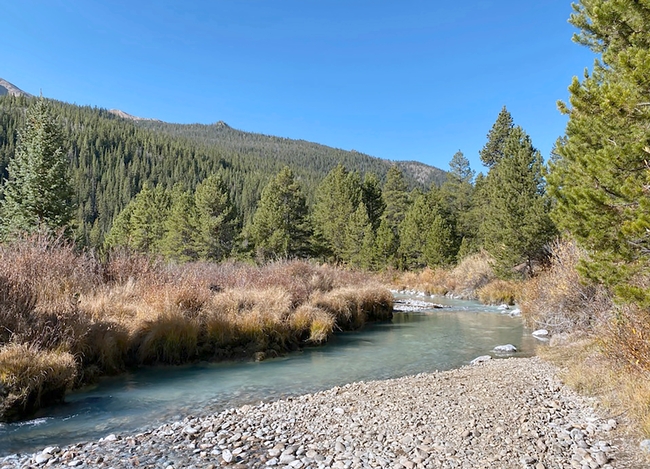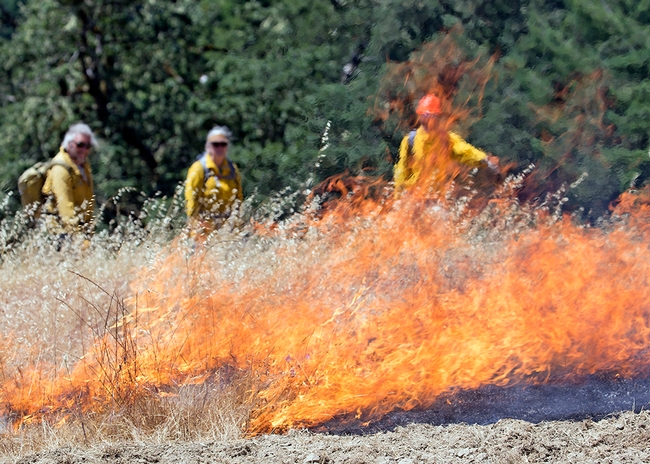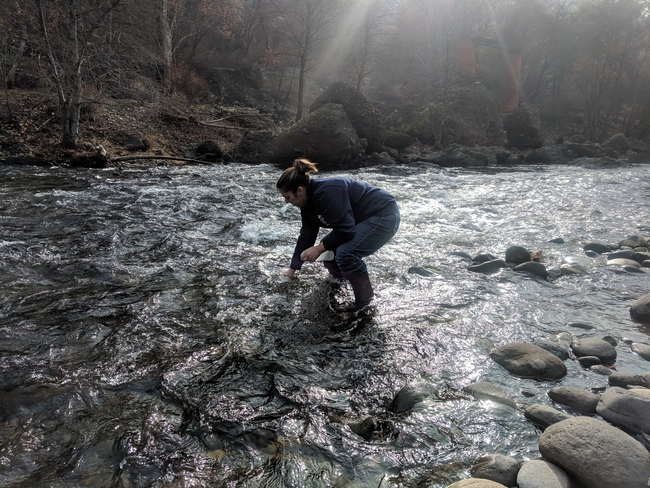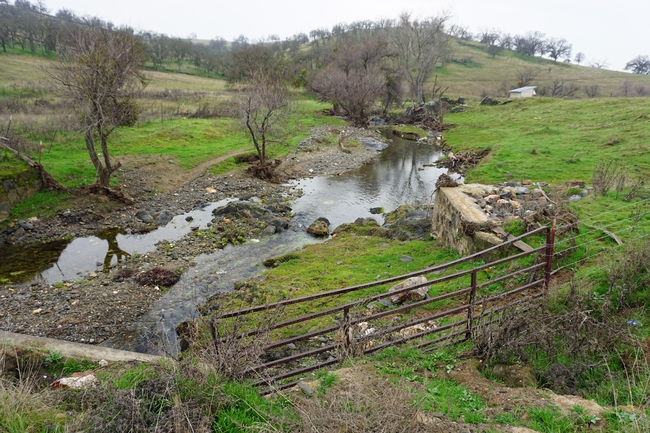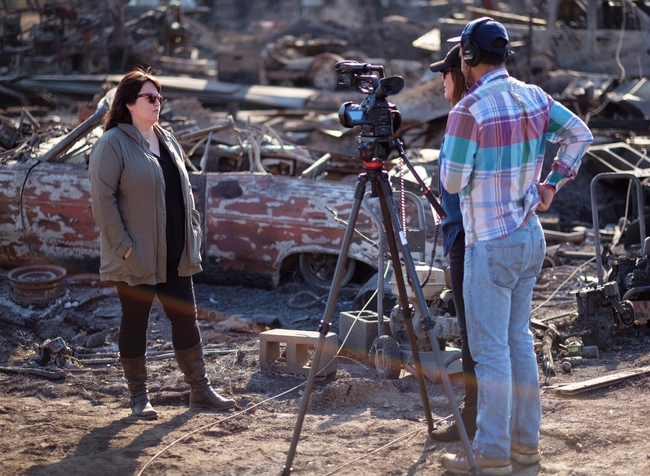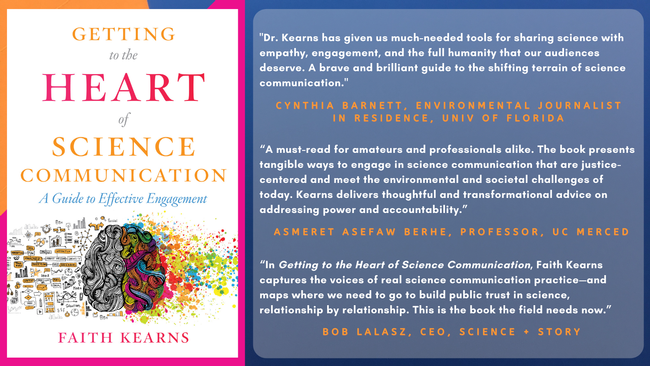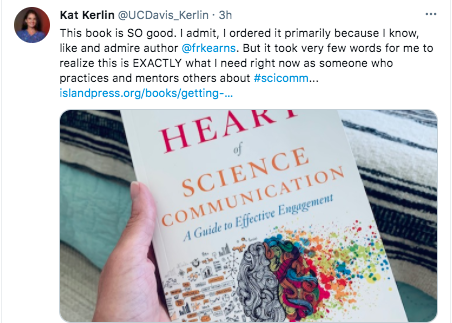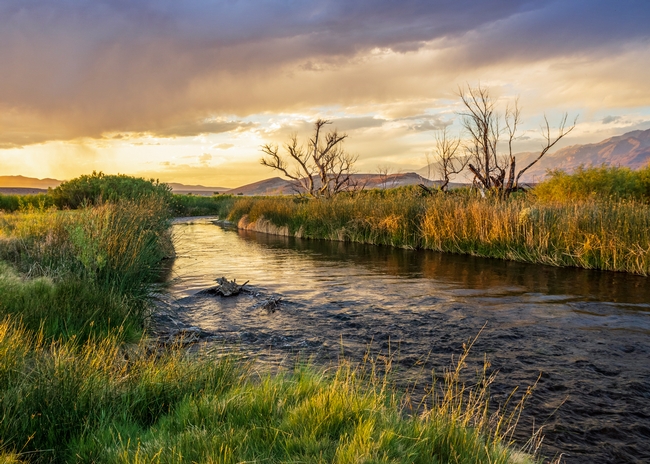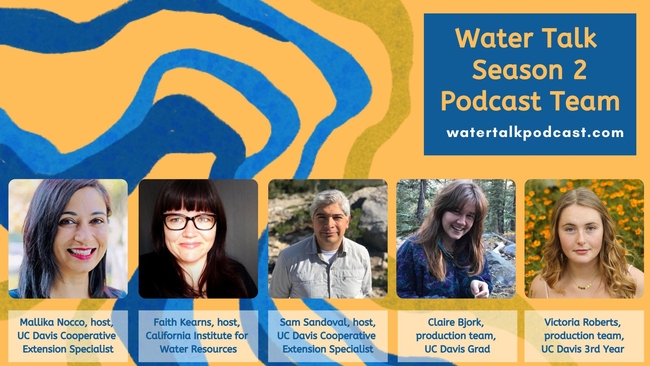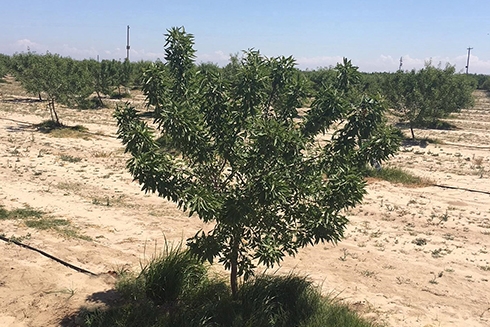Posts Tagged: Faith Kearns
How can California protect its water supply from wildfire?
Stakeholders from across disciplines and institutions offer recommendations to ensure safe, reliable water supply amid a growing wildfire threat
It's intuitive that wildfires can affect ecosystems, harm wildlife and contaminate streams and rivers. But wildfires can also have complex, severe and direct effects on our water supply and infrastructure — effects that have only become clear in recent years. Scientists and policymakers must integrate insights and experience from many disciplines and sectors to understand and address the consequences.
In September, 23 scholars and practitioners with a diversity of water and fire expertise came together to answer a critical question: How can California proactively protect its water supply from fires? Their findings, combined with the insights of the author team, form the basis of a new scoping report, released by the University of California Division of Agriculture and Natural Resources' California Institute for Water Resources and the UCLA Luskin Center for Innovation.
“Different people have different pieces of the puzzle, but it's really hard to put them together. That is why we assembled this cross-sector group,” said Faith Kearns, academic coordinator at the California Institute for Water Resources.
Illustrated by the 2017 Tubbs Fire in Wine Country, it has been recognized that community water systems face effects that last long after the fire is quenched. For example, Boulder Creek residents in Santa Cruz County still did not have reliable water access more than a year after firefighters extinguished the 2020 CZU Lightning Complex Fire.
“This is truly an emergent issue,” said co-author Peter Roquemore, project manager at the Luskin Center for Innovation. “We have only seen wildfires directly affect community water systems in the past few years.”
To help California policymakers, researchers, affected communities, and water system operators understand the complex relationship between wildfire damage and water supply, the report authors and participants in this workshop present a set of recommendations:
- Make communications more accessible, consistent and trustworthy. Residents must receive timely, unified messaging, translated into appropriate languages and in accessible venues, telling them if their water is unsafe and how to access clean water.
- Invest in local capacity and expertise. The challenges faced vary widely for different communities, and it is important to provide each community with the resources it needs to address the risk it faces. As part of this, efforts should support Indigenous leadership, knowledge and practices to help manage healthy ecosystems.
- Provide guidance to update regulations. Guidance such as building codes and infrastructure regulations will help individuals and communities make informed decisions and address risk appropriately.
- Conduct research and build a broader base of knowledge. There is still much to learn, and it is important to illustrate the exact challenges water systems face and how best to address them.
- Make funding accessible and targeted. Increased earmarked funding for emergency water supplies, housing assistance, and support for water systems, local organizations, and others will help advance solutions.
- Further coordinate efforts to address water and fire issues. Focusing on these interconnected issues together, rather than tackling them separately, can lead to substantial benefits.
To read the specific recommendations identified, read Wildfire and Water Supply in California. Funding for this research was provided by the U.S. Geological Survey through the California Institute for Water Resources.
There’s a danger in over-simplifying California water conservation
You hear it every time drought returns to California: “Turn off the faucet when you brush your teeth.” “Collect shower water in a bucket before it warms up.”
While valuable, these tried and true drought resilience strategies can also deflect attention from the monumental challenges posed by droughts to natural areas, waterways, agriculture and people in California. Far-sighted and discerning management of the state's annual precipitation and groundwater is critical, particularly as droughts become more frequent due to climate change, said Faith Kearns, the academic coordinator of UC's California Institute for Water Resources.
“Like so many big societal problems, we don't want to get caught up believing individual actions alone will solve this problem,” Kearns said. “Conserving water in households can help people feel activated and certainly conserve some water. But, at the same time, it's not enough. We have big, systemic issues to deal with.”
Urban water use in homes, landscapes, schools and businesses amounts to about 10% of total developed water use in California, according to the Northern California Water Association. Irrigated agriculture uses 41%. The remaining 51% is used for water in rivers protected by state and federal laws as “wild and scenic,” water required for maintaining habitat in streams, and water that supports wetlands in wildlife preserves.
Traditionally, when surface water supplies for California farmers are cut during droughts, farmers pumped groundwater to bridge the gap. Over time, many of the state's groundwater basins have become severely depleted. In 2014, during a devastating five-year drought, the California Legislature passed the Sustainable Groundwater Management Act to regulate groundwater use in the state for the first time. The law aims for sustainable groundwater maintenance by 2040.
“We're in the implementation phase and local groundwater agencies are in various stages of developing and implementing sustainability plans,” Kearns said. “This is an opportunity for public participation to ensure all voices are heard in the effort.”
Of particular concern are underserved rural families who rely on wells for their household water. When the water table drops due to excessive pumping, the families can be left without water for drinking, washing and bathing. Small scale farmers often meet the same fate. Larger, neighboring farms may be able to drill deeper wells.
Wintertime flooding in permeable areas is one way groundwater can be recharged as it is used during the dry season. Getting access to water, developing infrastructure and flooding large farms will allow water to seep back into aquifers. Small-scale farmers can also be involved, said Ruth Dahlquist-Willard, the UC Cooperative Extension advisor to small-scale farmers in Fresno and Tulare counties.
“If there was a way to incentivize recharge on small farms, I think we could really contribute to groundwater management,” Dahlquist-Willard said. “It is not just about how we protect small farmers but also about how we involve them and have something that works for everyone's benefit.”
Fallowing land will likely be needed to meet the groundwater law's sustainability requirements. A 2020 report by UCCE specialist David Sunding and UC Berkeley professor David Roland-Holst, Blueprint Economic Analysis: Phase One Results, estimates about 992,000 acres of California farmland will go out of production, representing $7 billion in lost crop revenue and $2 billion in lost farm operating income.
The public can support smart and equitable water management by learning about decisions being made by their own local water providers and elected government representatives that impact the future of the California water supply. UC Agriculture and Natural Resources and its California Institute of Water Resources have gathered materials to serve as a starting point for understanding and advocating for sustainable water.
Science-based drought tipsheets
Online drought and water management seminar series
Listen to these episodes of the Water Talk podcast:
Episode 02: Ranching and Water in California — Water Talk
Episode 09: Small Farms and Water in California — Water Talk
Episode 10: California Water Policy and Extension — Water Talk
Episode 15: Wild Horses and Water in California — Water Talk
Episode 16: Agriculture in the California Borderlands — Water Talk
Episode 21: Watering Urban Green Spaces — Water Talk
Find more on the UC California Institute for Water Resources website.
Communicating about climate crisis and other scientific issues requires more than facts
New book offers advice for discussing misconceptions and oversimplifications
Research can inform people to take appropriate action to solve problems, but effectively communicating is key. Faith Kearns, who works on emotional and contentious water-related issues such as climate change, drought and wildfire, has learned firsthand that the way scientists communicate can deeply affect people and communities.
Kearns, an academic coordinator for the California Institute for Water Resources at University of California Agriculture and Natural Resources, has written about what she has learned in 25 years of practice in a new book, Getting to the Heart of Science Communication: A Guide to Effective Engagement from Island Press. The book includes on-the-ground experiences of many science communicators, including those working in Cooperative Extension.
“The book offers an on-the-ground perspective on communicating emotional and contentious topics and is filled with concrete examples from practitioners, which is different from many science communication books written by journalists or researchers,” Kearns said. “It is centered around practical tools like relating, listening, working with conflict, and understanding trauma, all with an eye toward equity and justice.”
Among the many issues addressed in the book – ranging from food security to disasters – climate change is one of the biggest. Meteorologist and climate journalist Eric Holthaus notes in the foreword that giving people scientific facts isn't convincing many people that there is a climate crisis, much less solving the climate emergency. “This crisis is getting worse not because of a deficit of information, after all, but because of a deficit of action,” writes Holthaus.
Grist journalist Kate Yoder wrote, “For a long time, scientists have relied on a ‘deficit' model of communication. The idea is that if people are given enough facts and data about, say, climate change, then they'd accept the science— in a logical, rational way — and decide to take action. This idea isn't necessarily wrong, but it ignores the messiness of the world and the role that emotions play in guiding decisions.”
Kearns begins the book with a personal anecdote that changed the way she thought about science communication. After she and her colleagues gave a presentation on wildfire preparation to residents in Mendocino County, an emotional audience member explained to Kearns that he had labored to keep a recent wildfire from consuming his property and the way the researchers had presented their information without attention to the fact that a fire had just burned through the area had been re-traumatizing.
“Many communicators, including myself, have neglected other pieces of communicating that don't have to do with providing information,” Kearns said. “It's so important to know who you are in conversation with and what they've been through. Their history, communities, and personal experiences impact how they will receive scientific information. One of the most important skills you can have as a science communicator is to be able to listen well.”
Jonathan Wai reviewed Kearns' book in Science. He wrote: “The book offers a view from the front lines of science communication, profiling practitioners who explain their journeys and share stories of relationship building and community engagement. Framing herself as a scientist turned science communicator, Kearns describe her vision for the future of the field, one in which relational communication is fundamental.”
Kearns acknowledges in the preface that a single book cannot be all things to all people. “My hope is that I can fairly treat the argument that emotion, conflict, and power struggles are already present in science communication and engagement work and that ignoring them is counterproductive,” she wrote.
Getting to the Heart of Science Communication is written for science communicators and scientists working at research institutions, government agencies, consulting firms or nonprofit organizations. In addition, it will be of interest to those working with scientists including journalists and decision-makers. People interested in science will also find much to consider in this updated view of the science communication landscape.
The 280-page paperback is published by Island Press and can be ordered for $30 (use code HEART for a publisher discount) at https://islandpress.org/books/getting-heart-science-communication and wherever books are sold.
For more about science communication, see Kearns' blog at https://faithkearns.substack.com.
Drought is back! And so is Water Talk
The Water Talk podcast returns Friday, April 2, for its second season. This year's podcast will include a focus on the water issue on many minds at the end of a relatively dry rainy season: drought. As Water Talk co-host Faith Kearns says in the Season 2 preview episode, “in California, drought is not ‘if', it's ‘when'.”
The second season will include a diverse group of guests from every corner of the state; border to border. “We thought a lot about the geography of the state, the identities of the people with whom we were speaking, and the experts we were talking with, and the topics,” says co-host Mallika Nocco.
The weekly podcast will feature discussions of agriculture, water policy, environmental and social justice, land and wildlife management, water for cities, Indigenous perspectives on water, climate change, and other issues related to California water.
Some aspects of the podcast were modified in the second season as well. For example, instead of recording the podcast during a simultaneous live event, each episode was recorded with only the co-hosts. In addition, two production assistants supported the development of each episode.
“The Water Talk team has new members!” the group tweeted. “We were thrilled to welcome ultra-talented Claire Bjork and Victoria Roberts as production support for Season 2, thanks in part to a UC ANR Renewable Resources Extension Act grant.”
You can subscribe, listen and download all the episodes in Spotify, Apple and Google podcasts, as well as on the podcast's webpage. In addition to listening to the podcast, you can follow @podcast_water on Twitter for water-related news.
To catch up on Season 1 of Water Talk, visit watertalkpodcast.com.
The Water Talk podcast is hosted by Mallika Nocco, UC Cooperative Extension specialist in the UC Davis Department of Land, Air, and Water Resources; Faith Kearns, California Institute for Water Resources academic coordinator; and Samuel Sandoval Solis, UC Cooperative Extension specialist in UC Davis Department of Land, Air, and Water Resources.
February 2019 news clips
Above average rainfall in February benefits strawberry crops in the Central Valley
(ABC 30) Reuben Contreras, Feb. 28
…Above average rainfall in February will help this year's harvest last through October.
"It looks like it is in full bloom right now and it looks like it is going to rain. So we need the water as much as we can right now," said Michael Yang, University of California Cooperative Extension.
He works with small farms and specialty crops in the Hmong community, including a strawberry field in Northeast Fresno near Willow and Behymer.
Yang said the rain will add to the groundwater supply most farmers use to grow their crops plus it will help make the strawberries sweeter.
Ventura County Helps Keep Farming Alive in Southern California
(KCET) Teresa O'Connor, Feb. 27
…Connecting the community to the food system is vitally important for the health of individuals and the survival of local farms, according to Rose Hayden-Smith, Ph.D., who is the editor of the UCFoodObserver.com, an online publication for the University of California (UC). A long-term county resident, Hayden-Smith was previously sustainable food systems initiative leader for UC's Ag and Natural Resources division.
“Everyone eats: everyone is a stakeholder,” says Hayden-Smith. “I would like people to be engaged with the food system, and to advocate for positive change. Think about where your food comes from and ask critical questions about the supply chain. Meet people who are involved in producing, processing, distributing and preparing the food you eat. Honor them with questions about and interest in their work.”
Gene-edited animal creators look beyond US market
(Nature) Heidi Ledford, Feb. 20
…It isn't always easy to pick up a research project and move it to a different country. About ten years ago, difficulties finding funding for his research drove animal geneticist James Murray to move his transgenic goat project from the University of California in Davis to Brazil. The goats were engineered to produce milk that contained lysozyme, an enzyme with antibiotic properties. Murray hoped that the milk could help to protect children from diarrhoea.
https://www.nature.com/articles/d41586-019-00600-4
Newly discovered nematode threatens key crops
(Farm Press) Logan Hawkes, Feb. 20
“The arrival of this nematode (Meloidogyne floridensis) in California is a little surprising — it has the potential to infect many of California's economically important crops,” says UCCE Kern County Advisor Mohammad Yaghmour. “Root samples had been collected from an almond orchard in Merced County last year, and confirmed at the California Department of Food and Agriculture's (CDFA) Nematology Lab as M. floridensis.”
Yaghmour facilitated the second discovery of the nematode in a Kern County orchard a month after the first was uncovered in an almond orchard in Merced County.
https://www.farmprogress.com/tree-nuts/newly-discovered-nematode-threatens-key-crops
Ag Innovations Conference and Trade Show returning to Santa Maria for third event
(Santa Ynez Valley News) Mike Hodgson, Feb. 19
The Ag Innovations Conference and Trade Show will return to Santa Maria for its third event, this time focusing on biologicals, on March 5. The deadline for discounted early registration is next week.
… Considering the growing interest in biologicals and the demand for sustainably produced food, organizers selected topics on biocontrol agents, biostimulants and botanical and microbial pesticides and fungicides for the third conference, said organizer Surendra Dara, UC Cooperative Extension adviser for entomology and biologicals.
“The use of biocontrol agents, biopesticides, biostimulants and other such tools is gradually increasing in our efforts to produce with sustainable practices,” Dara said.
Almond Update: Orchard Recycling Research Showing Strong Results
(AgNet West) Taylor Hillman, Feb. 14
Orchard recycling research has been going on for over 10 years. UC Cooperative Extension Advisor Brent Holtz has been leading the project and said they continue to see positive results. There is an expense that comes with the practice but Holtz said their longest trial is making that cost back in added production.
http://agnetwest.com/almond-update-orchard-recycling-research
NASA tech helps agriculture
(Hanford Sentinel) Julissa Zavala, Feb 13,
…In keeping with the expo's theme, “Harvesting Technology,” NASA Administrator Jim Bridenstine visited the International Agri-Center in Tulare and spoke about how technology originally developed for space exploration is now being repurposed and used to improve numerous aspects of agriculture around the world.
…The measurement, also taken with LIDAR, can be used to calculate precise irrigation needs of plants and crops. Bridenstine said this pilot program, in partnership with the University of California Cooperative Extension and other agencies, is only being used in California.
UC Davis, wine industry cultivate relationship
(Fruit Growers News) Robin Derieux, Feb. 13
Under the hot summer sun of the San Joaquin Valley, just south of Merced, Miguel Guerrero of The Wine Group is trying a new high-wire act. In collaboration with University of California-Davis Cooperative Extension, Roduner Ranch vineyard manager Guerrero is experimenting with Cabernet Sauvignon vines and other varieties elevated by a single wire at 66 inches – plantings that are 2-3 feet higher than the traditional winegrape canopy.
…“The beauty of the high-wire system is that the fruit zone is really defined – a solid wall of grape clusters – and the pruning machine can just zip right alongside the vines,” said Kaan Kurtural, a UC Davis Cooperative Extension viticulture specialist. “We can carry more crop, and with mechanical leaf removal, we get that sun-dappled exposure that feeds the fruit. Less leaf cover means the vines require less water, and the grape quality is much better.”
https://fruitgrowersnews.com/article/uc-davis-wine-industry-cultivate-relationship
There's Still So Much We Need To Learn About Weed—And Fast
(Wired) Matt Simon, Feb. 11
… But late last month, UC Berkeley opened the Cannabis Research Center to start tackling some of these social and environmental unknowns. With its proximity to the legendary growing regions of Northern California, the center can start to quantify this historically secretive industry, measuring its toll on the environment and looking at how existing rules affect the growers themselves. The goal is to create a body of data to inform future policies, making cannabis safer for all.
… So for the past few years Van Butsic, codirector of the Cannabis Research Center, and his colleagues have been sifting through satellite images to pinpoint those unaccounted-for farms. “We have an army of undergraduates who look at high-resolution imagery and digitize how big the farms are, how many plants we can see,” Butsic says. Because cannabis plants love light, growers usually keep them out in the open. The researchers still miss many trespass growers, however, who tend to hide their plants in the brush to avoid detection.
https://www.wired.com/story/theres-still-so-much-we-need-to-learn-about-weed
Cultured meat: Good or bad, promise or peril?
(Agweek) By Jonathan Knutson, Feb. 11
…To Alison Van Eenennaam, University of California-Davis Extension specialist in animal biotechnology and genomics, proponents of cell-based meat are "overhyping the environmental benefits" and providing an incomplete, misleading case for it.
https://www.agweek.com/business/agriculture/4568613-cultured-meat-good-or-bad-promise-or-peril
Broomrape Weed Spreads Quickly
(AgNet West) Taylor Hillman, Feb. 8
By the time you see broomrape weed in your fields, it may be too late. There has been a resurgence of broomrape reports over the last decade in California. Retired UC Cooperative Extension Farm Advisor Gene Miyao said although the parasitic weed is far from widespread, it could become so quickly. “The seeds are very small, the growth is primarily underground until it starts sending up shoots and then it very quickly starts setting seed,” he said. “A single seed attached to a tomato plant may send up half-a-dozen shoots, and each shoot might have 1,000 seeds or more.”
http://agnetwest.com/broomrape-weed-spreads-quickly/
New CA Bill Aims to Help Prepare Farmers for Extreme Weather, Changing Climate
(YubaNet) CalCAN, Feb. 7
The state and University of California have made significant investments in research to better understand agriculture's unique vulnerabilities and adaptation strategies to a changing climate, including in the state's recently released Fourth Climate Change Assessment. But not enough has been done to translate climate risks to the farm level and assist farmers in adapting to climate change.
…The bill would also fund trainings for technical assistance providers and agricultural organizations. According to a 2017 survey of 144 University of California Agriculture and Natural Resources staff, 88% of respondents believe it is important to incorporate climate change information into farm extension programs, but only 43% actually do. Respondents cited a lack of access to climate information relevant to farmers and expressed interest in education on technical tools and information resources.
Top administrators from UC ANR visit Imperial Valley
Imperial Valley Press
They were also briefed about UCCE and DREC projects, accomplishments and barriers by the directors, county advisors and CES representatives.
Drought concerns loom for California farmers, ranchers despite recent rain
(KSBY) Dustin Klemann, Feb. 6
Even with the onslaught of rainy weather, the U.S. Drought Monitor states San Luis Obispo County and Santa Barbara County remain in a moderate drought.
On Wednesday, the UC Cooperative Extension held a workshop in Solvang titled “Weather, Grass, and Drought: Planning for Uncertainty.”
“Leave it to a drought workshop to bring the rain,” Matthew Shapero joked. He is a livestock and range advisor for UCCE.
Shapero pointed out a call he received questioning the monitor's accuracy on a local level.
“He said ‘I really don't think the drought monitor accurately reflects what I am seeing on the ground.'”
… “We Californians are constantly accused of not having seasons. We do,” said Dr. Royce Larsen, an advisor of the UCCE. “We have fire, flood, mud, and drought. That's what we live with. And it's getting more and more so every year.”
California legislators honor Summit's Steward Leader Award Winners
(California Economic Summit, Feb. 5
Monday, February 4 was a red-letter day for stewardship in California. Not only was the California Legislature celebrating the Chinese Lunar New Year and “National Wear Red Day” as a symbol of support for women's heart health, but members of both houses also paused to recognize Glenda Humiston and Paul Granillo as recipients of the California Economic Summit's 2018 Steward Leader Awards.
Revealed: how big dairy pushed fattier milks into US schools
(Guardian) Jessica Glenza, Feb. 4
…A nutritionist for the University of California called the idea that chocolate milk could help athletes “preposterous”.
“Milk is a very healthy beverage, it's got protein, calcium, vitamin D – there's a reason we are mammals and grow up drinking milk,” said Lorrene Ritchie, the director of the Nutrition Policy Institute at the University of California. “There's nothing about adding chocolate to it that's going to help an athlete.”
https://www.theguardian.com/us-news/2019/feb/03/revealed-dairy-lobby-fat-milk-trump-sonny-perdue
California's water paradox
(Morning Ag Clips/The Conversation) Faith Kearns and Doug Parker, Feb. 4
These days, it seems everyone is looking for a silver bullet solution to California's drought. Some advocate increasing supply through more storage, desalination or water reuse. Others propose controlling demand through conservation or restriction of water use by urban and agricultural users.
https://www.morningagclips.com/californias-water-paradox
Camp Fire: When survival means shelter
(Mercury News) Lisa Krieger, Feb. 2
“We have to talk about it, as a community, to reduce vulnerability – especially for citizens who don't drive,” said Scott Stephens, co-director of UC-Berkeley's Center for Fire Research and Outreach. “In the Camp Fire, people didn't die because they wanted to stay. They had to stay. All of a sudden, the fire was at their front door step.”
For Australia's policy to work in California, residents must be physically and mental trained, said wildfire specialist Max A. Moritz with UC's Division of Agriculture & Natural Resources. In Australia, which conducts formal training, “there is active participation from homeowners … so both homes and people are better prepared.”
https://www.mercurynews.com/2019/02/02/wildfires-when-survival-means-shelter/

